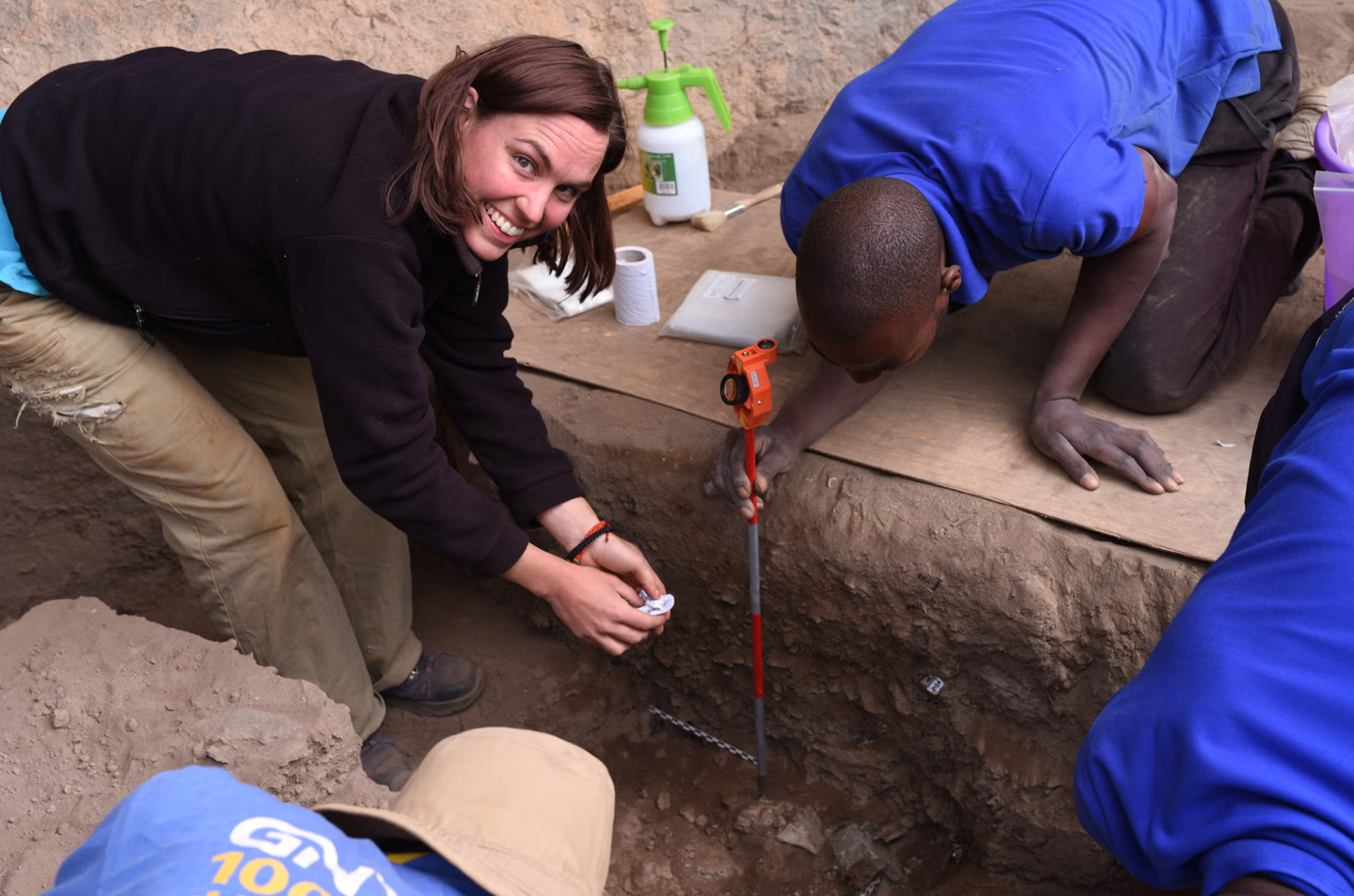Breakthrough cancer treatment uses blood cells to destroy tumors
Scientists made a significant breakthrough in adoptive cell therapy (ACT), a promising immunotherapy tool to help treat advanced melanoma.

[Apr.12, 2023: Staff Writer, The Brighter Side of News]
Northwestern University scientists have made a significant breakthrough in adoptive cell therapy (ACT), a promising immunotherapy tool to help treat advanced melanoma. (CREDIT: Creative Commons)
Northwestern University scientists have made a significant breakthrough in adoptive cell therapy (ACT), a promising immunotherapy tool to help treat advanced melanoma. For the first time, they have discovered that it is possible to isolate a tumor's attack cells non-invasively from blood, rather than from tumors. The finding opens the door for ACT to treat harder-to-reach cancer types and makes it a more viable option for hospitals.
"We started asking questions about whether the immune cells that go into tumors come back out, and if you could find them in the bloodstream," said Shana O. Kelley, the paper's corresponding author. "We didn't know if we'd be able to find them or if we could see enough of them to even study them. Sure enough, they're in the blood. This is the first time these cells have been studied in this context."
ACT is a new form of cancer therapy that harnesses immune cells collected from the patient's tumors. The therapy could provide a new treatment option to cancer patients, potentially bypassing radiation therapies and harsh chemotherapy drugs. The procedure involves taking white blood cells from the patient's tumor and multiplying them in a lab before infusing them back into the patient to fight the cancer.
This new breakthrough makes it easier to isolate and replicate these immune cells from blood instead of invasive procedures such as surgery. As a result, the therapy can be more widely used to treat various types of cancer.
Related Stories
The study, published in the journal Nature Biomedical Engineering, builds on previous work from Kelley's lab that was published last year in the same journal. In the previous study, Kelley and her team treated mice with their own immune cells gathered from a mass, which dramatically shrunk their tumors, compared to traditional cell-therapy methods.
The 2022 paper also detailed the novel method used to isolate and multiply tumor-infiltrating lymphocytes (TILs), a process that efficiently sorts through and harvests cells to recover 400% more than current approaches, ultimately making the anti-cancer response stronger.
By removing and processing melanoma tumors, scientists have found TILs within them. But sometimes removing tumors to harvest TILs can pose significant risks to patients, leaving no path to harness ACT to fight many types of cancer.
Kelley wondered if TILs might exist elsewhere in the body — outside tumors. After finding TIL-like lymphocytes — or circulating tumor-reactive lymphocytes (cTRLs) — in animal blood, the team tested whether or not cTRLs had the same ability as TILs to kill tumor cells. Surprisingly, they did.
The study's novel method uses engineering-based tools to isolate the best tumor fighters, paving the way for a new road in cell therapy. Kelley has spun out the new technology into a health tech startup CTRL Therapeutics, which will petition the U.S. Food and Drug Administration to move the platform into clinical trials.
"This new breakthrough leads us to ask some exciting questions about how early cTRLs appear in blood," Kelley said. "Could we diagnose and treat cancer earlier using these cells?"
The study highlights the potential of ACT in treating various types of cancer beyond melanoma. ACT has shown significant promise in treating advanced melanoma, but it has yet to be approved by the FDA as a standard treatment for any type of cancer.
The Need for New Cancer Therapies
Cancer remains a significant global public health problem. According to the World Health Organization (WHO), cancer is the second leading cause of death globally, responsible for approximately 9.6 million deaths in 2018. WHO estimates that one in six deaths globally is due to cancer. The incidence of cancer is expected to increase by 60% globally over the next two decades, primarily due to population growth and aging.
For the first time, Northwestern scientists have discovered it is possible to isolate a tumor’s attack cells non-invasively from blood, rather than from tumors. The finding opens the door to treat harder-to-reach cancer types and makes it a more viable option for hospitals. (CREDIT: Northwestern University)
The development of new technologies that allow for the non-invasive isolation of circulating tumor-reactive lymphocytes (cTRLs) from blood could revolutionize the field of adoptive cell therapy (ACT) for cancer treatment. Traditional ACT involves harvesting immune cells called tumor-infiltrating lymphocytes (TILs) from a patient's tumor and then expanding and activating them outside the body before reinfusing them into the patient to target and attack cancer cells. However, this approach has been limited by the need to surgically remove the tumor and the difficulty in generating enough TILs for effective treatment.
The discovery that cTRLs can be isolated from blood without the need for invasive procedures could overcome these limitations, making ACT a more viable option for a wider range of cancer types. In addition, the new technology developed by Northwestern University scientists to isolate and replicate the most effective cTRLs could further enhance the efficacy of ACT.
Non-invasive collection of tumour-reactive cells in blood circulation for cancer immunotherapy. (CREDIT: Nature Biomedical Engineering)
The potential of this new approach to cancer treatment has attracted the attention of researchers and investors alike, with CTRL Therapeutics, the startup founded by Shana O. Kelley to commercialize the technology, receiving significant funding from venture capital firms and pharmaceutical companies.
According to Kelley, the ability to diagnose and treat cancer earlier using cTRLs could be a game-changer. "If we can detect circulating tumor-reactive lymphocytes in the blood, we may be able to diagnose cancer at an earlier stage when it is more treatable," she said. "This could also enable us to develop personalized cancer vaccines based on a patient's own immune cells, which would be more effective and have fewer side effects than current cancer therapies."
cTRLs isolated from the peripheral blood of patients and co-cultured with tumour cells dissociated from their resected tumours resulted in the enrichment of interferon-γ-secreting cell populations. (CREDIT: Nature Biomedical Engineering)
However, there are still many challenges to be addressed before cTRL-based ACT can become a standard treatment option for cancer. One major hurdle is the variability of cTRLs across different types of cancer and even within individual patients. This means that identifying and isolating the most effective cTRLs for a particular cancer may require extensive screening and testing, which could be time-consuming and costly.
Another challenge is the potential for cTRL-based ACT to trigger immune-related adverse events, which can range from mild flu-like symptoms to life-threatening complications such as cytokine release syndrome. To minimize the risk of these events, researchers will need to develop methods for selectively targeting cancer cells without harming healthy cells and tissues.
Despite these challenges, the discovery of cTRLs and the development of new technologies to isolate and replicate them represent a significant breakthrough in the field of cancer immunotherapy. As researchers continue to refine and optimize this approach, there is hope that it could provide a powerful new tool for fighting cancer and improving patient outcomes.
Note: Materials provided above by The Brighter Side of News. Content may be edited for style and length.
Like these kind of feel good stories? Get the Brighter Side of News' newsletter.



